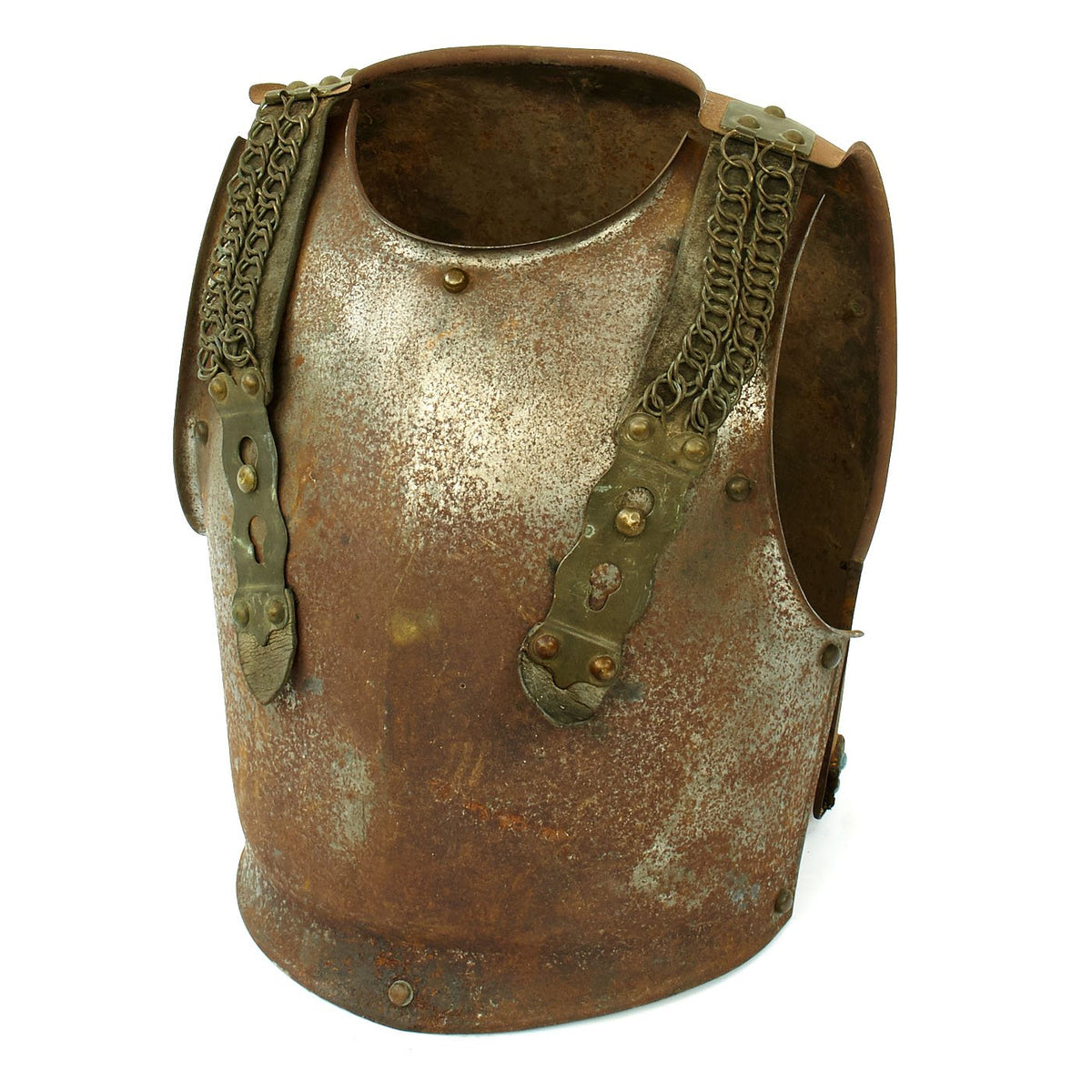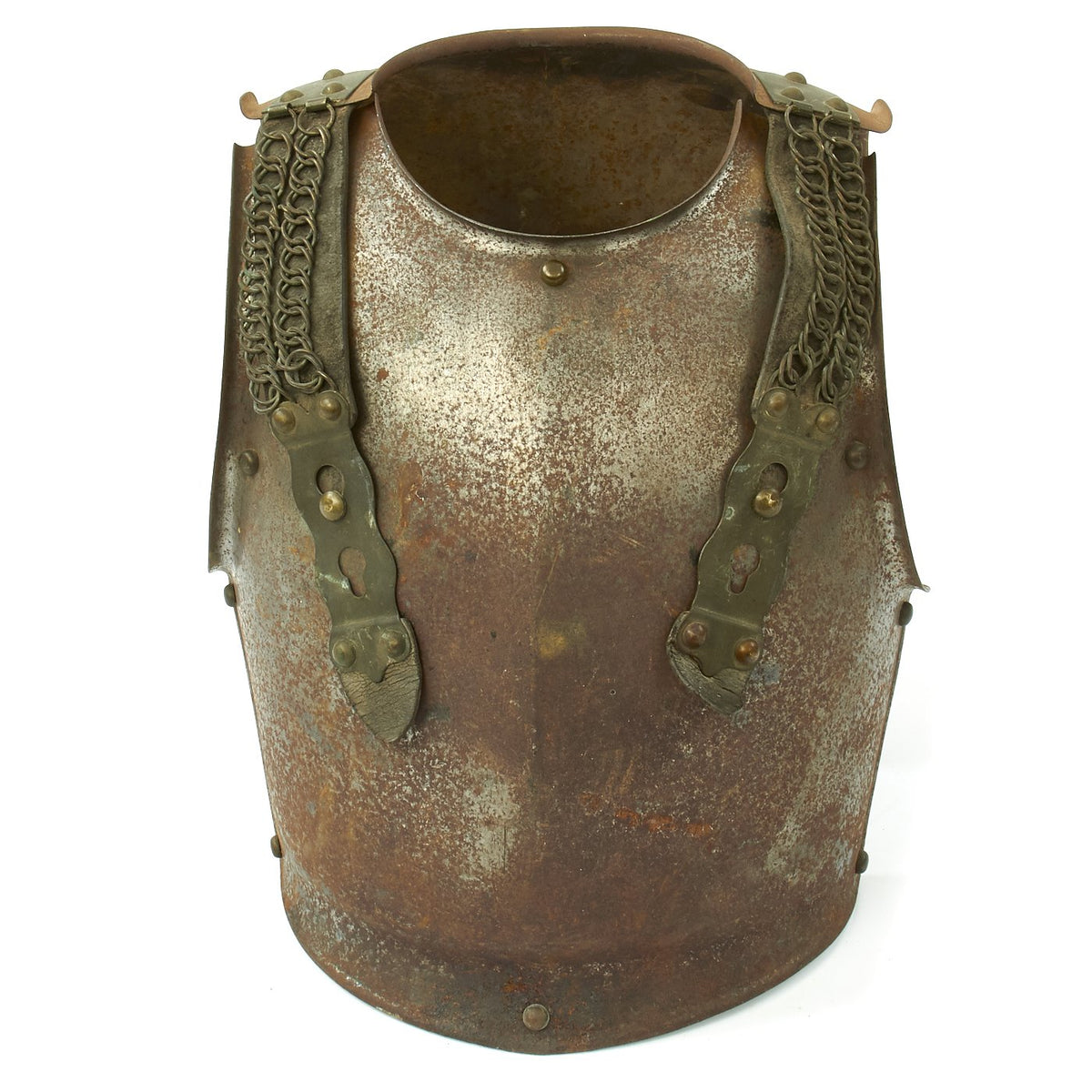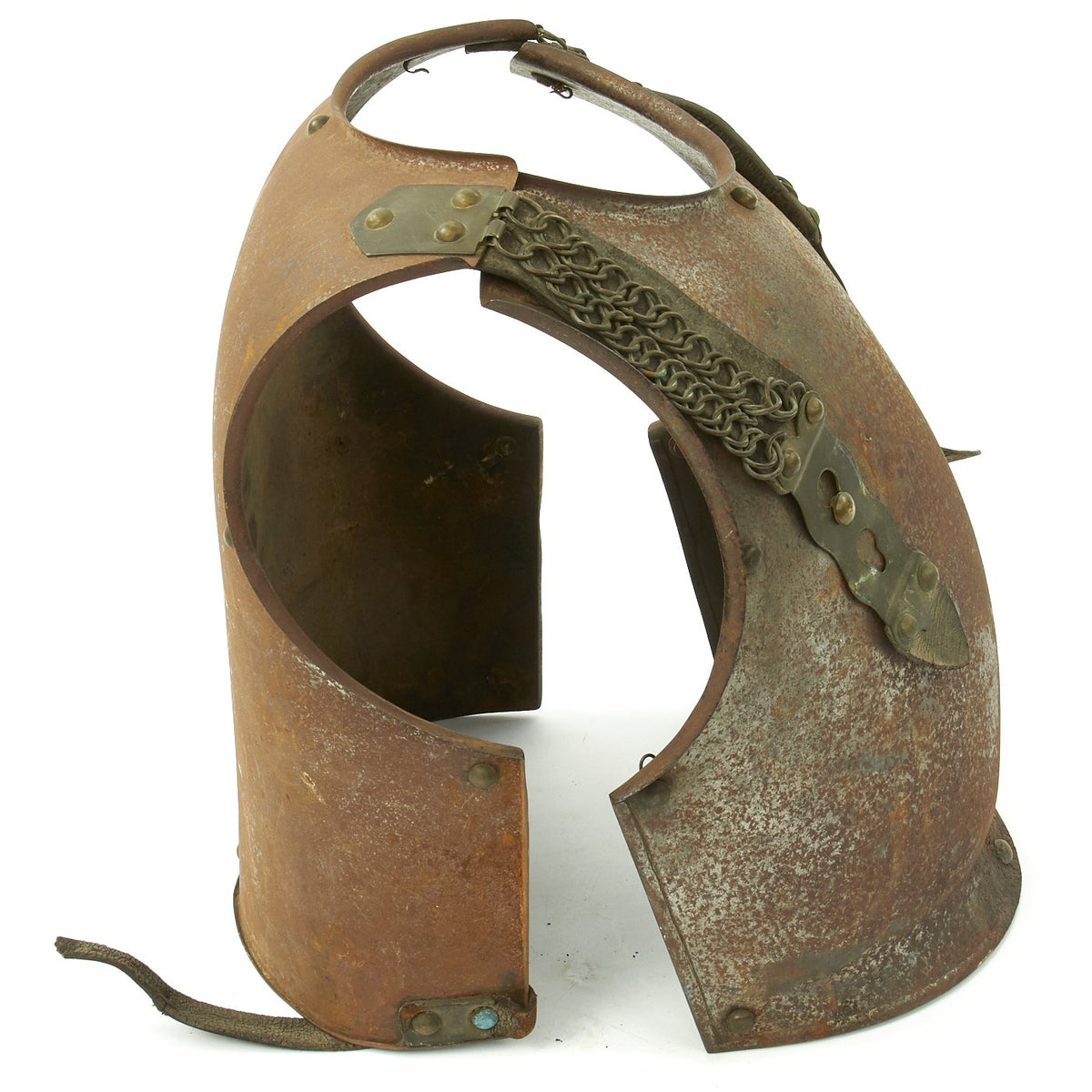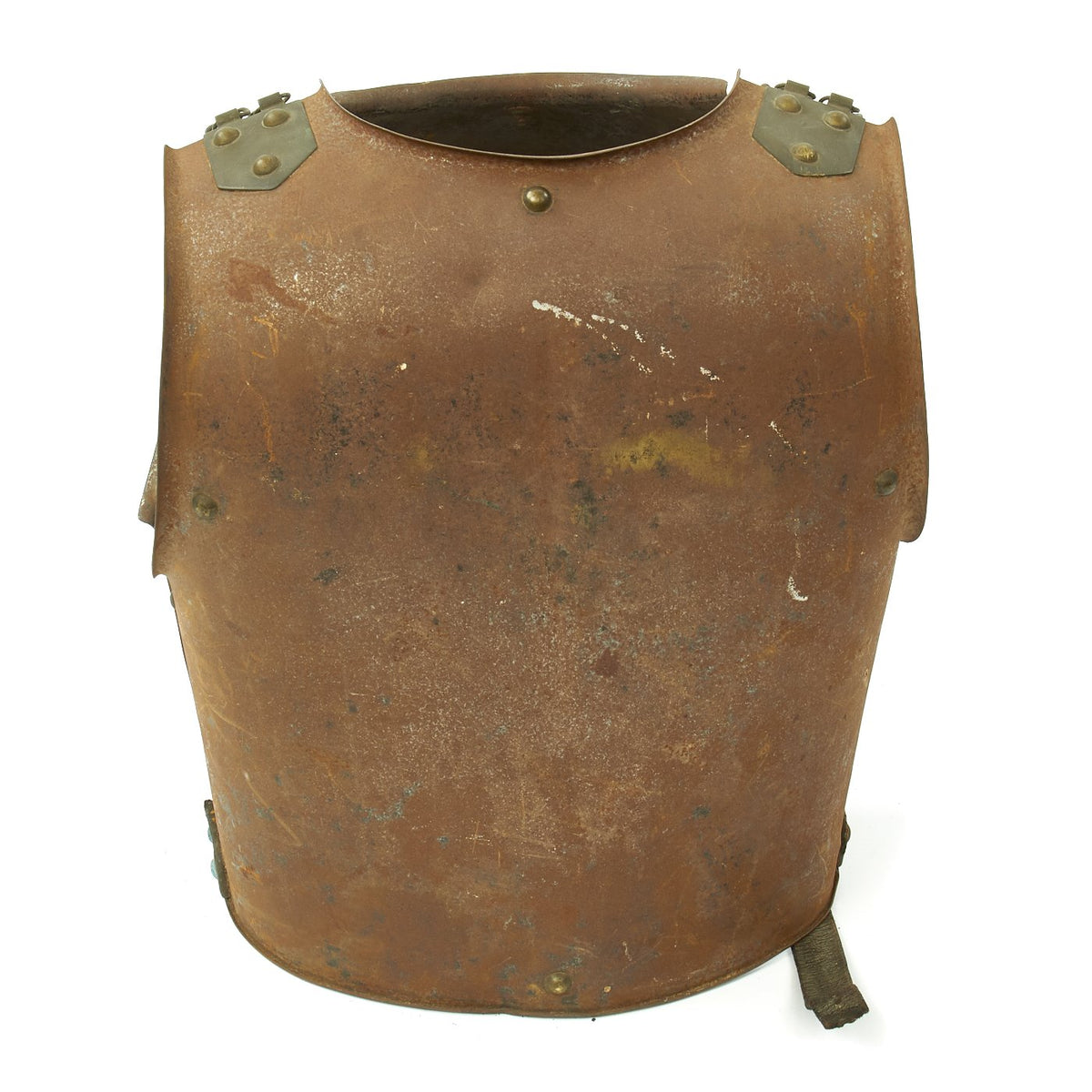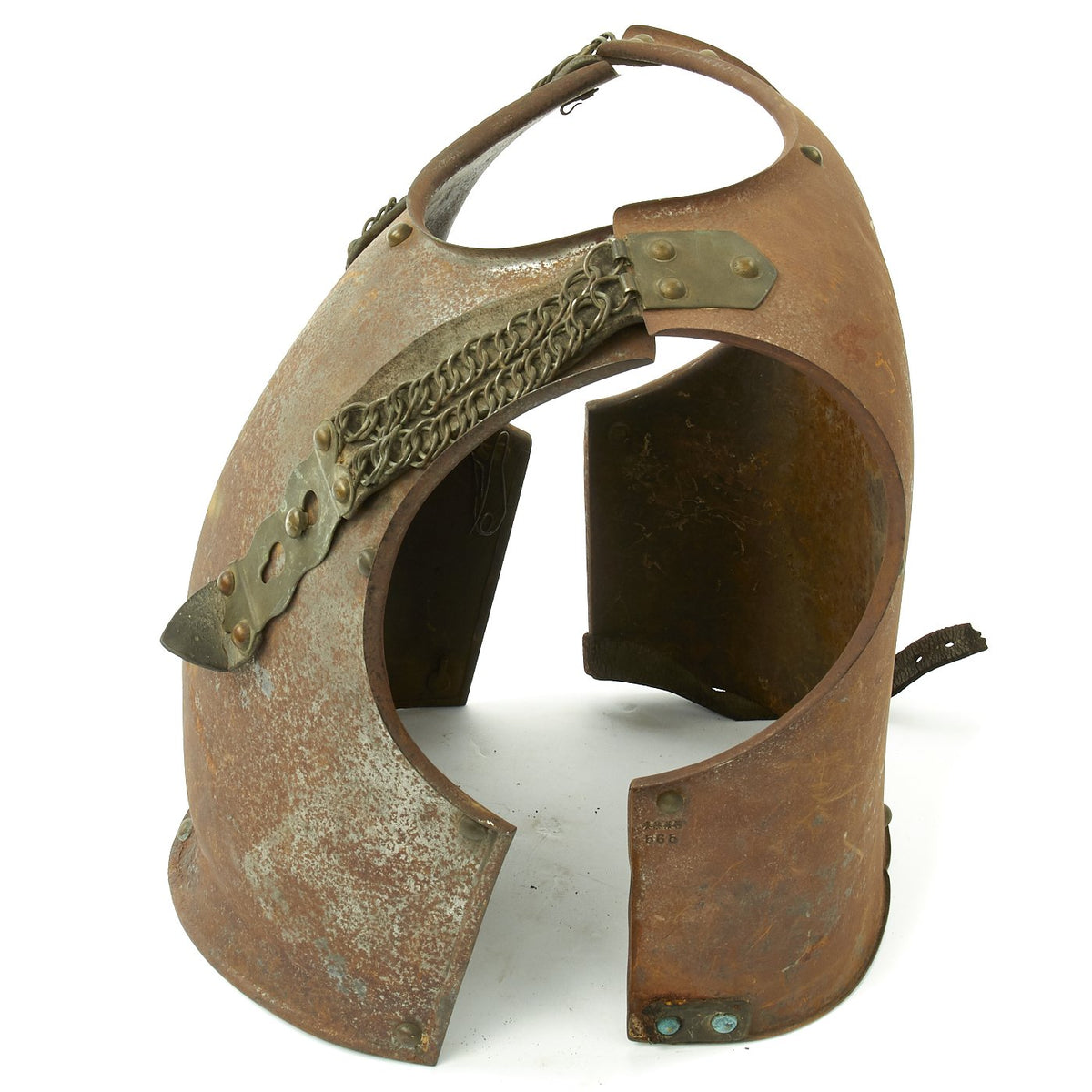Original French 2nd Empire Cavalry Cuirass Set Original Items
$ 895,00 $ 223,75
Original Items: Only One Set Available. The cavalry have used armor for since ancient Greek and Roman times. In Europe in the Middle Ages full suits were used by the nobility and from the Tudor period of the 16th Century Breast and Back Plates, known as Cuirasses, were in continual use right up to the era of Napoleon III. Even today ceremonial wear includes such half armor on members of the British Household Cavalry.
Here we have French half armor, as was used during the Napoleonic Wars and famously featured during the Battle of Waterloo in 1815. This particular set was made after 1860 and was the style was used through the 2nd Empire under Napoleon III and into WWI.
Modern military tactics have obsoleted both the use of this sort of body armor and of horses so these have been relegated to history. The front plate much heavier than the back plate this set comes with its brass ring and leather shoulder straps connecting the rear and front plates.
Neither plate has visible markings due to oxidation, wear and age, but both are genuine and in nice display condition.
Cuirassiers were cavalry equipped with cuirass armour and firearms, first appearing in late 15th-century Europe. The first cuirassiers were produced as a result of armoured cavalry, such as the men-at-arms and demi-lancers, discarding their lances and adopting the use of pistols as their primary weapon. In the later 17th century, the cuirassier lost his limb armour and subsequently employed only the cuirass (breastplate and backplate), and sometimes a helmet. By this time, the sword or sabre had become their primary weapon, pistols being relegated to a secondary function.
Cuirassiers achieved increased prominence during the Napoleonic Wars and were last fielded in the opening stages of World War I. Cuirassiers continue to be employed as ceremonial troops by a number of countries. The French term means “one with a cuirass” (cuirasse), the breastplate armour which they wore.
Fast Shipping with Professional Packaging
Thanks to our longstanding association with UPS FedEx DHL, and other major international carriers, we are able to provide a range of shipping options. Our warehouse staff is expertly trained and will wrap your products according to our exact and precise specifications. Prior to shipping, your goods will be thoroughly examined and securely secured. We ship to thousands clients each day across multiple countries. This shows how we're dedicated to be the largest retailer on the internet. Warehouses and distribution centres can be located throughout Europe as well as the USA.
Note: Orders with more than one item will be assigned a processing date depending on the item.
Before shipping before shipping, we'll conduct a thorough inspection of the items you have ordered. Today, the majority of orders will be delivered within 48 hours. The delivery time will be between 3-7 days.
Returns
The stock is dynamic and we cannot completely manage it because multiple stakeholders are involved, including our factory and warehouse. So the actual stock may alter at any time. It's possible that you may not receive your order once the order has been made.
Our policy is valid for a period of 30 days. If you don't receive the product within 30 days, we are not able to issue a refund or an exchange.
You can only return an item if it is unused and in the same state as the day you received it. You must have the item in its original packaging.
Related products
Uncategorized
Uncategorized
Uncategorized
Angolan Rebel 1970s era 60mm Inert Display Mortar from Angolan Civil War Original Items
Uncategorized
Uncategorized
Uncategorized
Uncategorized
Armored Burgonet Helmet & Polearm from Scottish Castle Leith Hall Circa 1700 Original Items
Uncategorized
Uncategorized
Uncategorized
Uncategorized
Uncategorized
Uncategorized
Uncategorized
Uncategorized
Uncategorized
Uncategorized
Uncategorized
Uncategorized
Band of Brothers ORIGINAL GERMAN WWII Le. F.H. 18 10.5cm ARTILLERY PIECE Original Items
Uncategorized
